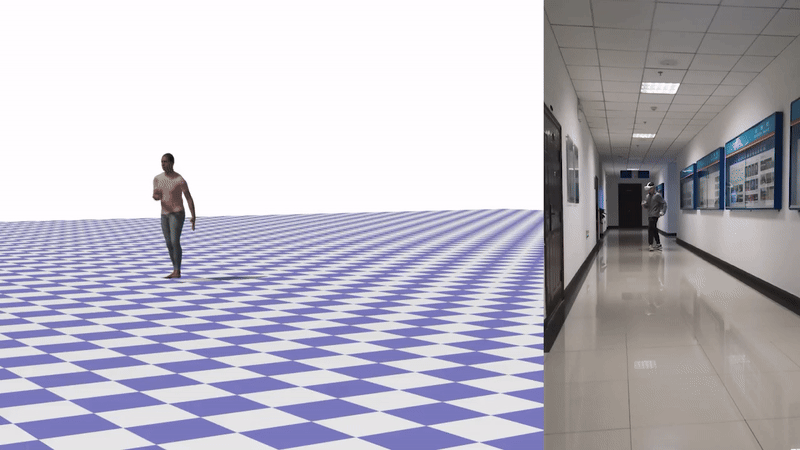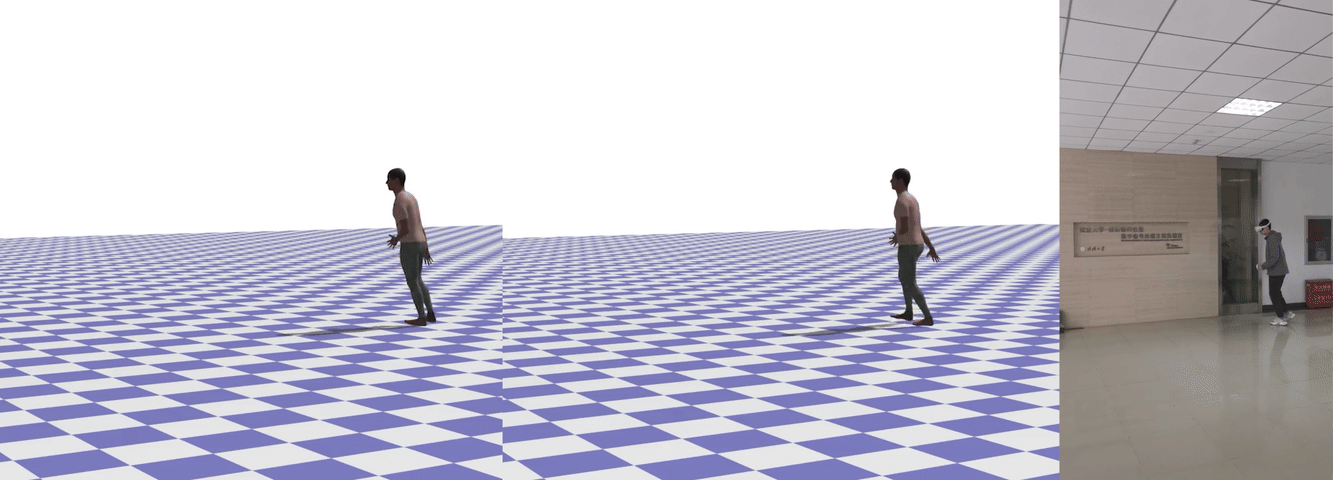 Stratified avatar generation from sparse observations. Given the sensory sparse observation of the body
motion: 6-DoF poses of the head and hand marked by RGB axes in (a), our method leverages a disentangled body
representation in (b) to reconstruct the upper-body conditioned on the sparse observation in (c), and
lower-body conditioned on the upper-body reconstruction in (d) to accomplish the full-body reconstruction in
(e).
Stratified avatar generation from sparse observations. Given the sensory sparse observation of the body
motion: 6-DoF poses of the head and hand marked by RGB axes in (a), our method leverages a disentangled body
representation in (b) to reconstruct the upper-body conditioned on the sparse observation in (c), and
lower-body conditioned on the upper-body reconstruction in (d) to accomplish the full-body reconstruction in
(e).





